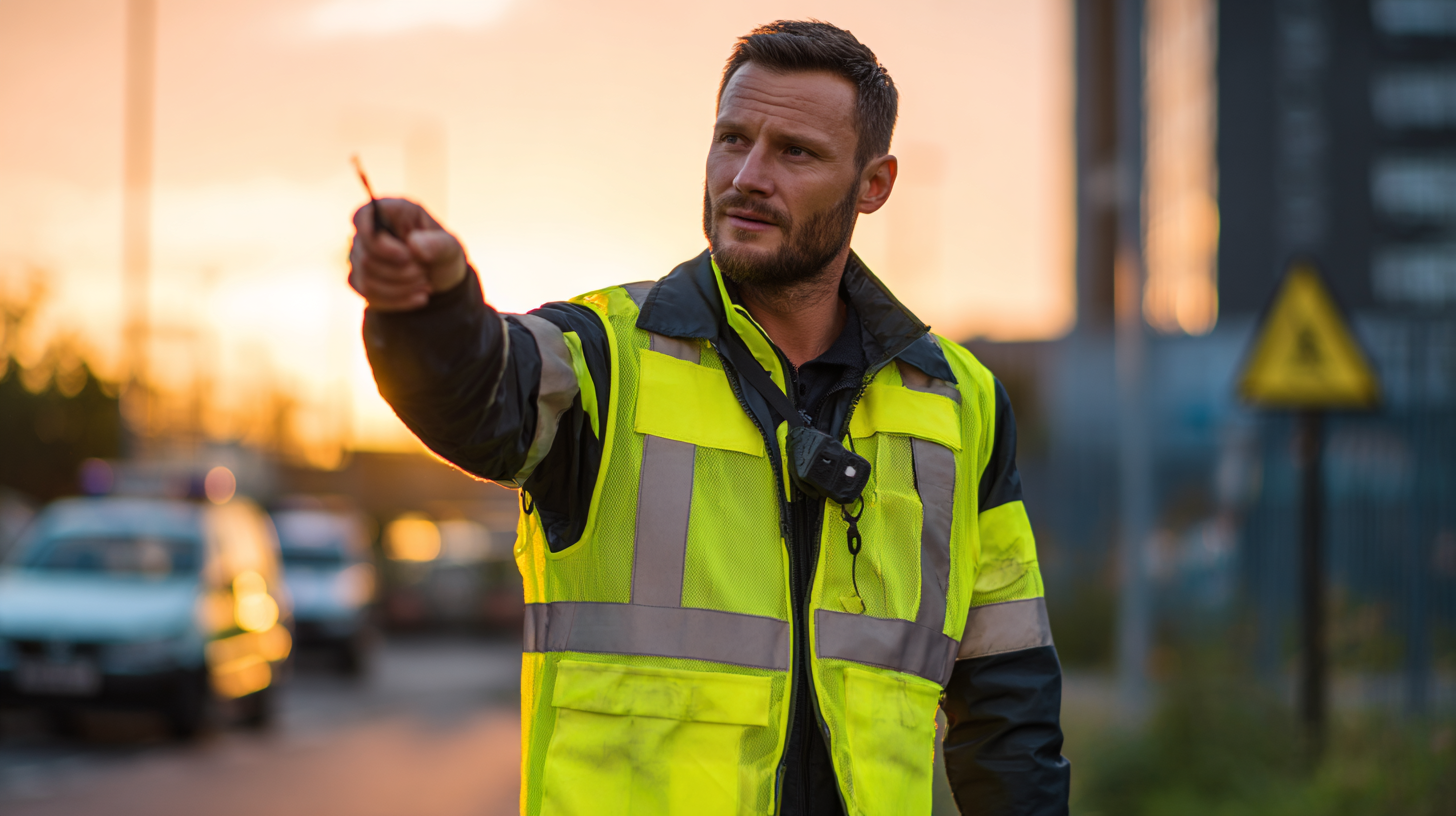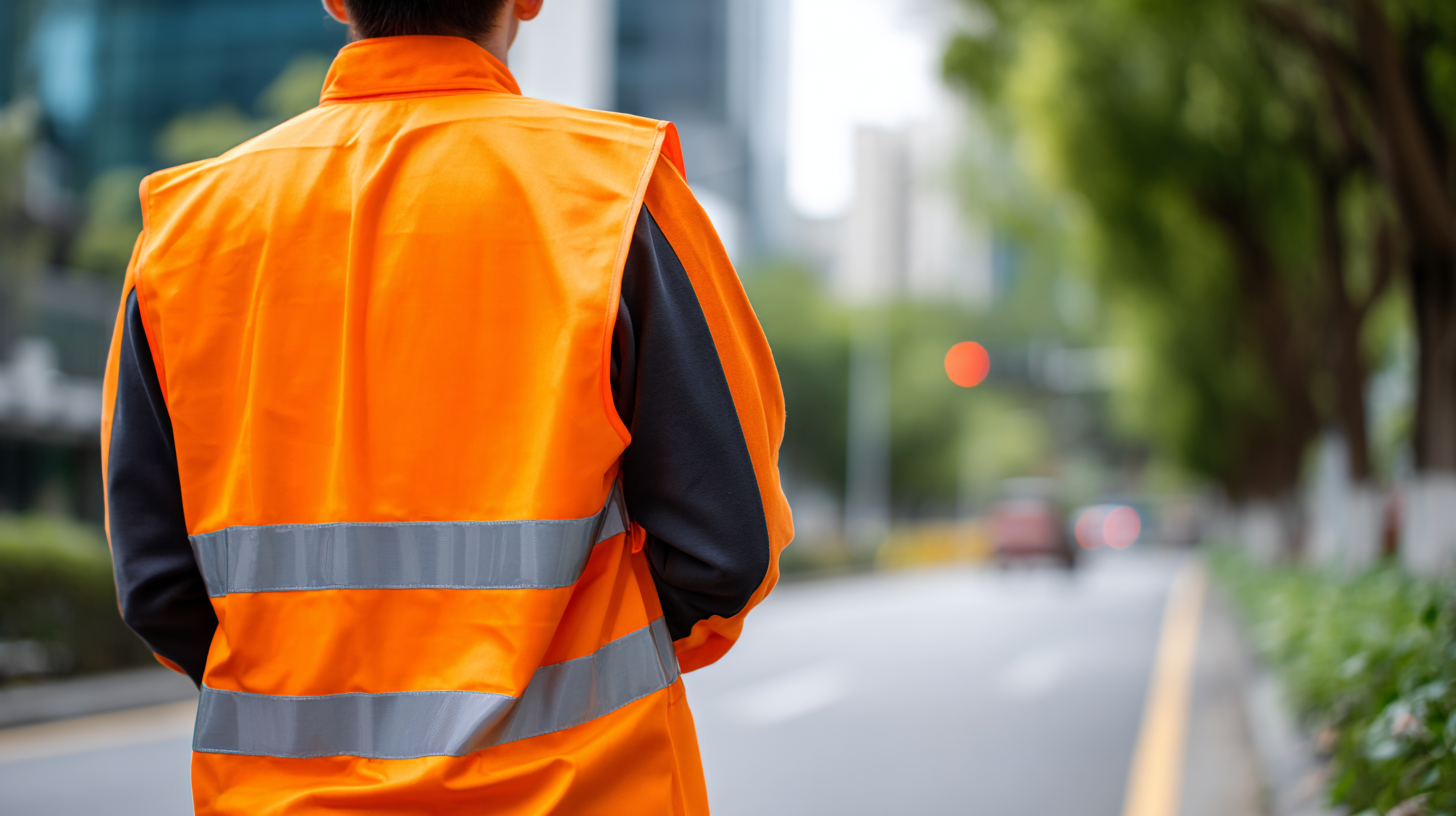When it comes to ensuring safety in various work environments, choosing the right Hi Vis Vest is crucial. These vests play a significant role in enhancing visibility, especially in low-light or hazardous conditions, helping to prevent accidents and enhance overall safety. However, with a myriad of options available in the market, selecting the appropriate Hi Vis Vest tailored to your specific needs can be a daunting task. Different industries and work scenarios demand different features, such as durability, breathability, and reflective properties. This guide will provide essential insights into the key factors to consider when choosing a Hi Vis Vest, ensuring that you make an informed decision that not only meets safety regulations but also contributes to your personal comfort and effectiveness on the job.

When selecting a high visibility vest, understanding the relevant standards and regulations is essential for ensuring safety in various environments. Hi vis vests are categorized based on their reflective materials, color, and the environments they are used in. In many countries, such vests must comply with specific safety standards, such as ANSI/ISEA 107 in the U.S. or EN 20471 in Europe. These standards dictate the minimum visibility criteria that the vest must meet, including the type of reflective materials and the overall design that enhances visibility in low-light conditions.
Tips: Look for vests that display compliance labels or certifications to ensure they meet the necessary safety standards. Always consider the environment in which you will be working—urban, rural, or industrial—as this can dictate the class of vest you need. For instance, Class 2 vests are typically adequate for workers in moderate traffic areas, whereas Class 3 vests provide higher visibility for those in high-risk situations.
It's also important to consider the vest's features beyond visibility. Vests come with various elements such as pockets for tools, zippers or Velcro closures for easy wear, and breathable fabrics for comfort. Ensuring the vest is both functional and compliant with safety regulations can significantly enhance your safety and efficiency on the job.
When selecting a high-visibility (Hi Vis) vest, it is essential to consider the specific application and environment. Different types of Hi Vis vests cater to various needs, ranging from construction sites to outdoor activities. For instance, breakaway safety vests are designed to enhance safety by allowing for quick removal in emergencies, while mesh vests provide breathability in warm conditions, making them ideal for summer use. The new innovations in Hi Vis gear, such as those recently introduced, expand choices for both the casual user and the industrial worker.
Tip: Always assess the working conditions before choosing a Hi Vis vest. For low-light environments or poor weather, opt for vests with reflective strips, as visibility can significantly reduce accidents. According to a report by the National Safety Council, proper visibility gear can decrease workplace incidents by up to 40%, highlighting the importance of this safety measure.
Moreover, consider the fit and comfort of the vest. A poorly fitting vest can hinder movement and reduce the likelihood of the wearer donning it consistently. Look for options that include adjustable features and breathable materials to ensure optimum comfort throughout the day. With proper research and choice, a Hi Vis vest can be a crucial element of workplace safety.
When selecting a hi vis vest, understanding your specific safety needs and environment is crucial. Different work settings pose distinct risks, and according to the Bureau of Labor Statistics, more than 20% of workplace injuries are due to slips, trips, and falls. Therefore, individuals working in high-traffic areas or construction sites should prioritize vests that offer high visibility and additional features such as reflective strips. The American National Standards Institute (ANSI) categorizes vests into different classes, indicating their visibility levels under varying conditions. For instance, Class 2 vests are recommended for workers in situations with limited visibility, while Class 3 vests are suitable for those needing maximum visibility.

Tips for choosing the right vest include assessing your environment before making a purchase. If you work near traffic or in low-light conditions, opt for a vest with bright colors and extensive reflective material. Additionally, consider the fit and comfort of the vest. It should allow for ease of movement without hindering your daily tasks. Remember to look for vests that meet the ANSI standards to ensure proper protection. Prioritize your safety by making informed choices about your protective gear based on industry guidelines.
When selecting a high-visibility vest to meet your safety needs, several key features should be at the forefront of your decision-making process. First and foremost, the material of the vest plays a crucial role. Look for vests made from durable, breathable fabrics that can withstand the wear and tear of your working environment. Additionally, the vest should be lightweight to ensure comfort, especially for prolonged use.
Another critical aspect to consider is the reflective properties of the vest. High-quality hi vis vests will have reflective strips strategically placed to maximize visibility in low-light conditions. Ensure that the vest complies with relevant safety standards, such as ANSI or EN visibility ratings, to guarantee an adequate level of protection. Moreover, adjustable features such as side straps and Velcro closures can enhance fit and ensure that the vest remains securely in place, allowing for ease of movement while you work.

When selecting the right hi vis vest for your safety needs, achieving a proper fit and ensuring comfort should be at the forefront of your considerations. A well-fitting vest enhances visibility while allowing freedom of movement, which is essential for effectively performing tasks in various environments. It’s crucial to measure yourself accurately and refer to the manufacturer's sizing chart before making a purchase. Look for vests that offer adjustable features, such as side straps or elastic bands, to accommodate different body shapes and ensure a snug fit.
Comfort is equally important when choosing work gear, as it can affect productivity and safety on the job. Opt for vests made from breathable materials that wick away moisture, especially if you work in warm conditions. Additionally, consider the weight of the vest; a lighter garment will be less cumbersome, making it easier to wear for extended periods. Features like mesh panels and padding in critical areas can further enhance comfort, ensuring that your focus remains on the task at hand rather than on adjusting an uncomfortable vest.
| Feature | Importance | Recommended Specification |
|---|---|---|
| Visibility Color | High visibility in low light conditions | Safety yellow or orange |
| Size and Fit | Comfort and range of motion | Choose size based on chest measurement; consider adjustable features |
| Material | Durability and comfort | Breathable, lightweight fabric such as polyester |
| Reflective Strips | Increased visibility | Strips should cover front and back |
| Pockets | Convenience for carrying tools and personal items | At least two front pockets |
| Closure Type | Ease of wear and adjustability | Zipper or Velcro |






